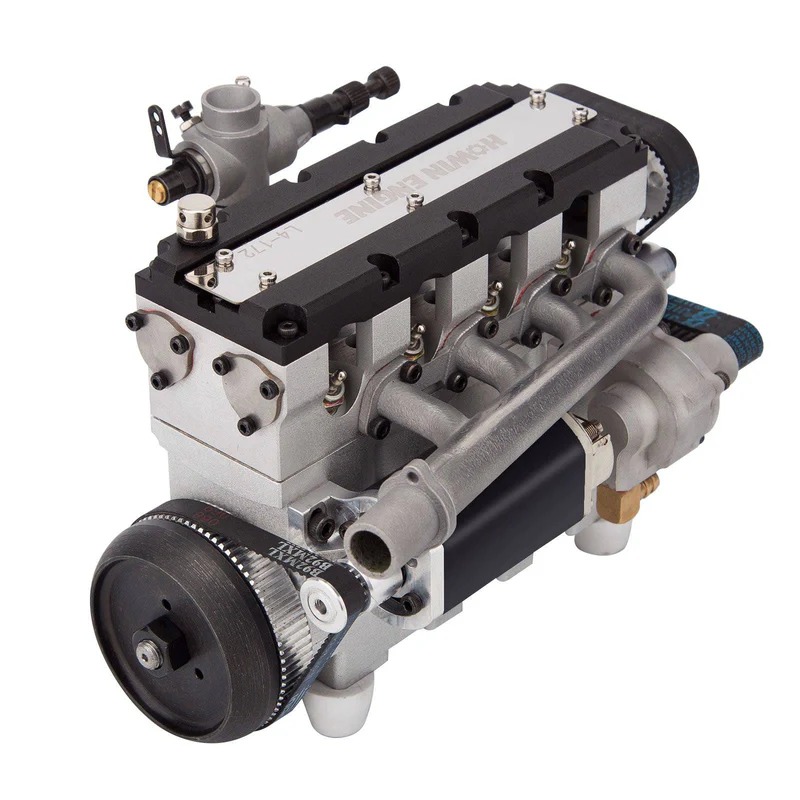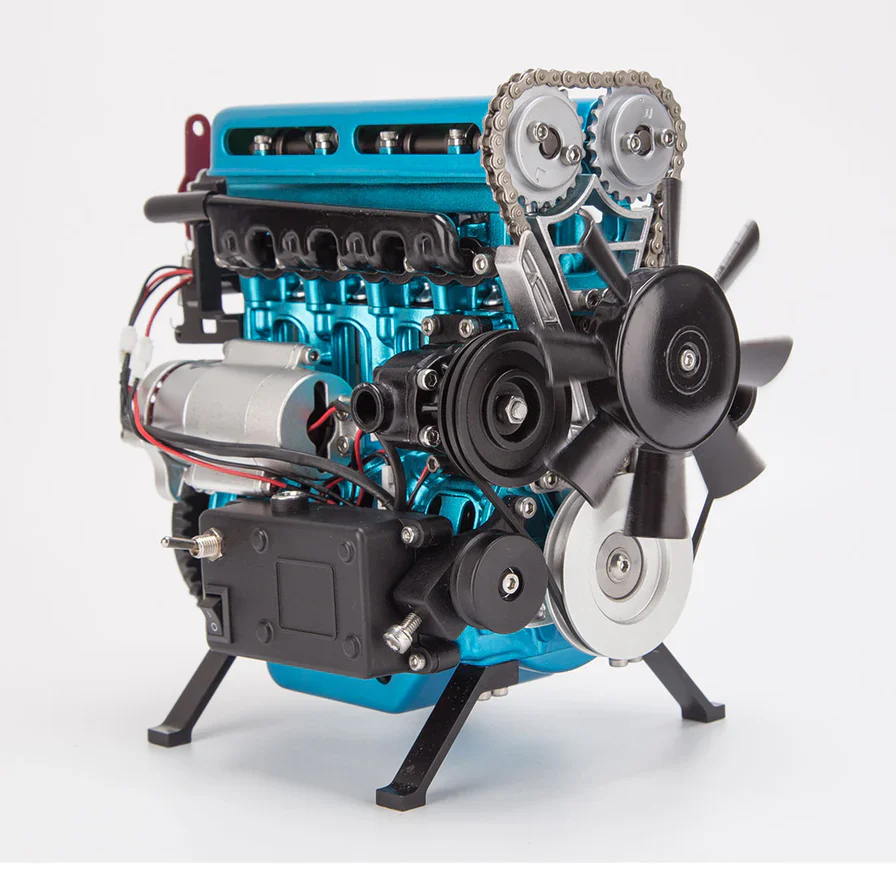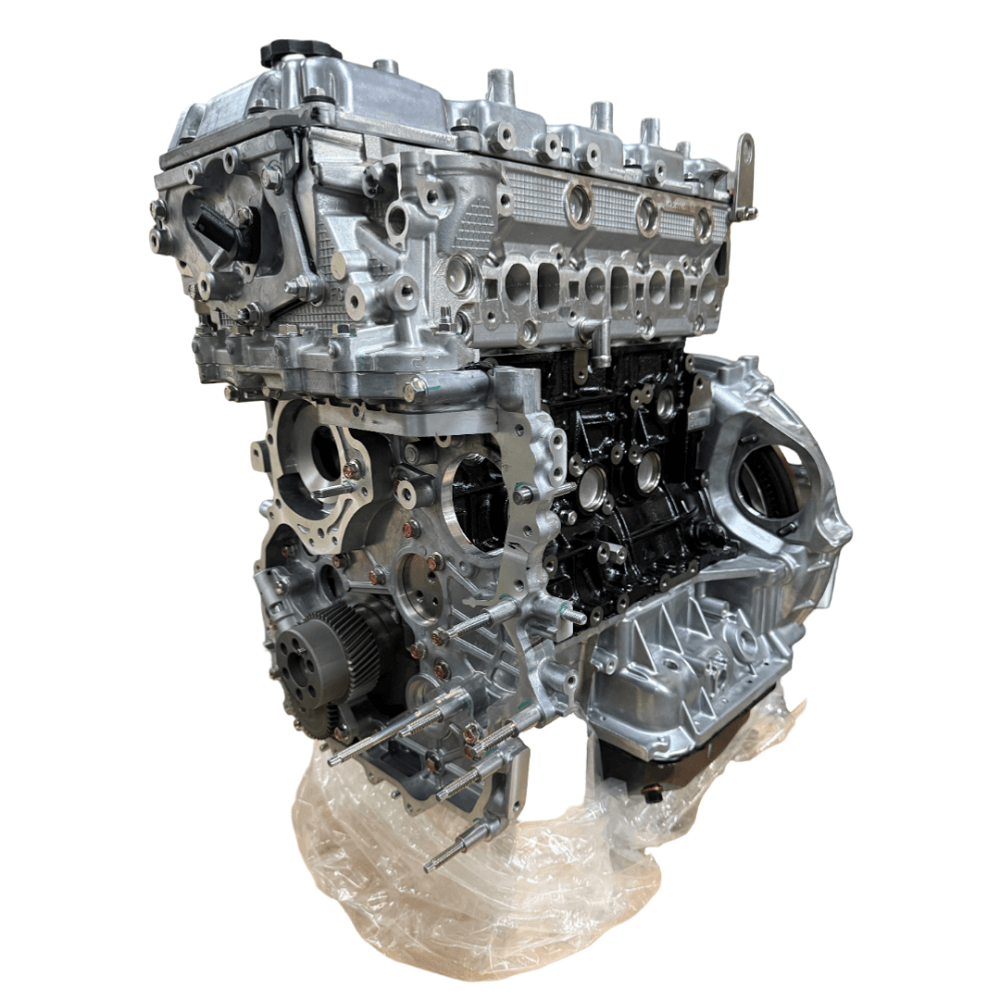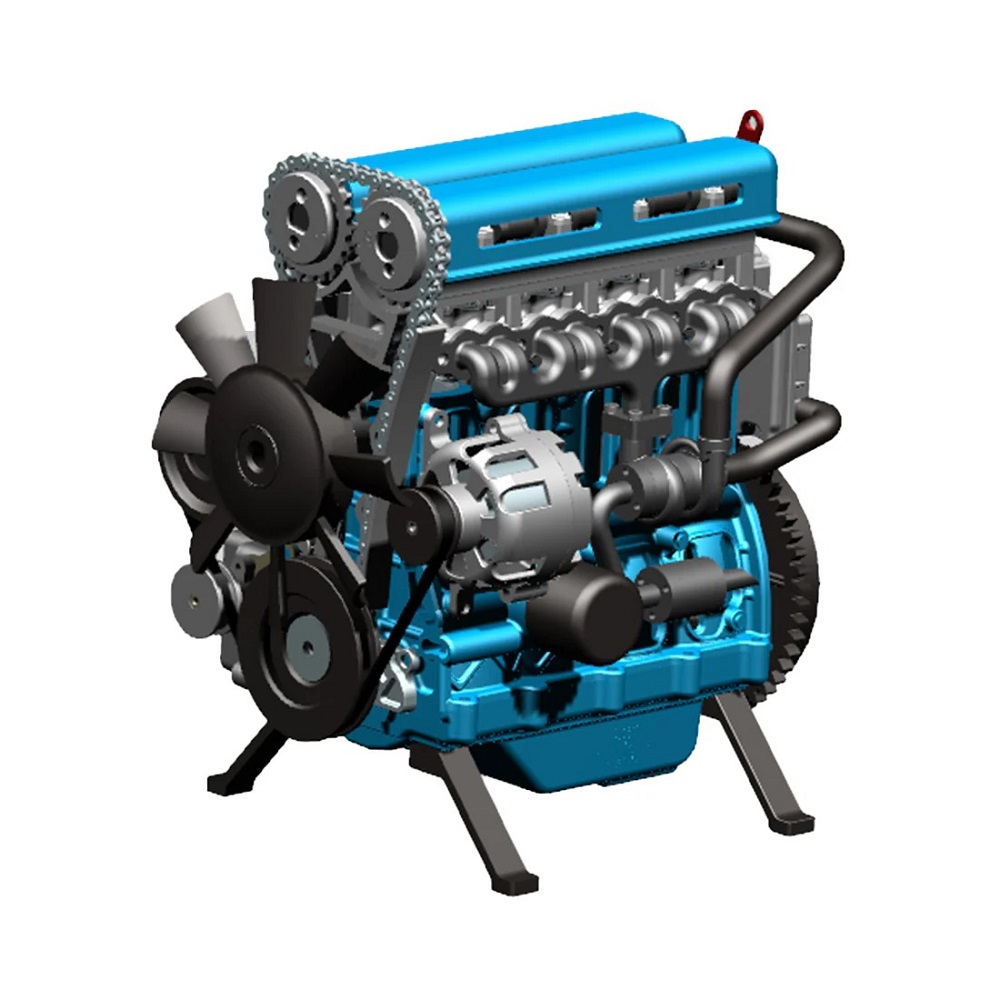Introduction to 4 Cylinder Engines
The Significance of Engine Types in Automotive Engineering
Automotive engines come in various configurations, including 4, 6, and 8-cylinder engines. Among these options, the 4 cylinder engine stands out as one of the most popular choices in modern vehicles. This engine type strikes a balance between efficient fuel consumption and sufficient power output, making it suitable for a range of applications. Understanding the characteristics of 4-cylinder engines is crucial for car enthusiasts and prospective buyers alike. They can also serve as the foundation for understanding more complex engine types.
Understanding Engine Configurations
The configuration of an engine refers to the number and arrangement of its cylinders. In a 2.0 l 4 cylinder engine, there are four cylinders arranged in a line (inline), a V-shape (V4), or a flat layout (flat-four). Each of these arrangements has its benefits and drawbacks in terms of performance, size, weight, and balance. Inline configurations are the most common due to their straightforward design and efficiency. The popularity of 4-cylinder engines has led many manufacturers to optimize their designs, resulting in advancements in technology, performance, and efficiency.

Purpose of This Guide
This guide aims to provide a comprehensive overview of 4-cylinder engines, including their various types, performance characteristics, advantages, and maintenance tips. We will explore how these engines function, their applications in the automotive industry, and their evolution over time. By the end of this article, car enthusiasts will have a deeper understanding of 4-cylinder engines and how they contribute to overall vehicle performance.
Types of 4 Cylinder Engines
Inline 4 Cylinder Engines
The inline 4-cylinder engine is the most common configuration found in modern cars. This design features four cylinders arranged in a single line, typically aligned vertically. Inline configurations offer several advantages, including compactness and simplicity in design. They are usually lighter than their V4 counterparts, contributing to better fuel economy. These engines also have a lower center of gravity, which enhances vehicle stability. Inline 4-cylinder engines are popular among manufacturers due to their ease of production and versatility across various vehicle models.
V4 Cylinder Engines
V4 engines feature a V-shaped arrangement of four cylinders, which allows for a more compact design compared to inline engines. While less common than inline configurations, V4 engines are known for their smooth operation and higher power output relative to their size. These engines can fit into smaller engine compartments, making them popular in motorcycles and some compact cars. However, V4 engines can be more complex to manufacture and maintain due to their unique design.

Flat 4 Cylinder Engines
Flat 4-cylinder engines, also known as boxer engines, have a distinctive design where the cylinders lie flat on either side of a central crankshaft. This configuration provides an even lower center of gravity, which enhances vehicle handling and stability. Flat engines are often associated with brands like Subaru and Porsche. They provide smooth power delivery and are known for their unique sound. However, flat engines can be more challenging to work on due to their layout. Ultimately, the choice between these configurations depends on the desired performance and design considerations.
Performance Characteristics of 4 Cylinder Engines
Power Output and Efficiency
One of the primary reasons for the popularity of 4-cylinder engines is their balance of power output and fuel efficiency. Many modern 4-cylinder engines are equipped with turbocharging technology, which significantly enhances their performance. Turbochargers allow these engines to produce power levels comparable to larger engines while still maintaining excellent fuel economy. This makes them an ideal choice for drivers who want a responsive vehicle without sacrificing everyday usability. Furthermore, the lower weight of 4-cylinder engines contributes to better overall energy efficiency.
Emissions and Environmental Impact
Emissions regulations have a significant impact on engine design, and 4-cylinder engines often meet stricter standards more easily than larger engines. Because they consume less fuel, 4-cylinder engines generally produce fewer pollutants, making them a more environmentally friendly option. Automakers are continually working to minimize emissions through advanced engine management systems, combustion technology, and lean fuel mixtures. As a result, many 4-cylinder engines have achieved impressive fuel efficiency ratings while reducing their environmental footprint.
Smoothness and Noise Levels
In terms of smoothness and noise, 4-cylinder engines can vary depending on design and technology. Inline engines typically provide smoother operation than V4 or flat configurations simply due to their design. However, advancements in engineering have improved the performance and sound dampening of these engines. Manufacturers often use balance shafts to reduce vibrations and noise levels in 4-cylinder engines, creating a more pleasant driving experience. This attention to detail contributes to overall driver satisfaction, making them an attractive choice for many vehicle owners.

Advantages of 4 Cylinder Engines
Fuel Efficiency
Fuel efficiency is one of the standout advantages of 4-cylinder engines. Due to their smaller size and lighter weight compared to larger engines, they require less fuel to operate. This attribute makes them ideal for daily commuters seeking to save on fuel costs and reduce their carbon footprint. Many manufacturers have designed 4-cylinder engine models with hybrid technology, further boosting fuel savings without sacrificing power. The increasing trend toward fuel-efficient vehicles shows a clear preference for 4-cylinder engines among environmentally conscious consumers.
Cost-Effectiveness
4-cylinder engines are generally more affordable to produce and maintain than their larger counterparts. Vehicles featuring these engines typically come with lower sticker prices, making them accessible for a broader range of buyers. Moreover, maintenance and repair costs tend to be lower due to the simplicity of their design compared to more complex engine configurations. Overall, purchasing a vehicle with a 4-cylinder engine can represent excellent value, combining affordability with functionality.
Lightweight Design
The lightweight nature of 4-cylinder engines contributes to improved vehicle performance. Lighter engines enhance handling and make it easier for cars to navigate turns and corners smoothly. This design can lead to better acceleration, allowing drivers to experience a more dynamic driving experience. In SUVs and crossovers, a lighter engine can result in improved fuel economy without sacrificing performance. As a result, 4-cylinder engines promote an ideal balance between power and drivability.
Maintenance Tips for 4 Cylinder Engines
Regular Oil Changes
An essential aspect of maintaining any engine, including 4-cylinder engines, is performing regular oil changes. Oil lubricates moving parts and helps dissipate heat, ensuring optimal performance. Over time, oil can break down and become contaminated, leading to increased friction and potential engine damage. Car manufacturers typically recommend oil changes every 5,000 to 7,500 miles, but it’s essential to refer to the owner’s manual for specific guidelines. Staying consistent with oil changes ensures your engine operates efficiently and prolongs its lifespan.
Monitoring Fluid Levels
In addition to oil, monitoring other fluid levels is crucial for keeping 4-cylinder engines running smoothly. Regularly check coolant, brake fluid, transmission fluid, and power steering fluid levels. Each fluid plays a vital role in ensuring proper functioning of different engine components. Rather than waiting for warning lights to appear, conducting periodic checks can help identify potential issues before they escalate.

Inspecting Belts and Hoses
Belts and hoses are critical components of a 4-cylinder engine, and their condition dictates engine performance. Regular inspections should be done to check for any signs of wear or damage. Look for cracks, frays, or leaks in hoses, as well as signs of tension loss among belts. Replacing worn or damaged components in a timely manner can prevent unexpected breakdowns and maintain engine efficiency. By attending to these details, you can prolong the life of your engine and ensure its reliability.
Driving Techniques to Optimize 4 Cylinder Engine Performance
Smooth Acceleration
How you drive can significantly impact your engine’s performance, especially in a 4-cylinder engine. Smooth acceleration can enhance fuel efficiency and reduce wear on engine components. Instead of rapid acceleration, gently press on the gas pedal to allow the engine to build speed gradually. This technique not only conserves fuel but also provides a smoother ride for passengers.
Avoiding Excessive Idling
Excessive idling can lead to increased fuel consumption and contribute to engine wear. Modern engines are designed to be more fuel-efficient, which means it may be more economical to turn off your engine if you expect to be stationary for an extended period. For instance, in drive-through lines or at long traffic stops, consider this practice for better fuel efficiency. By minimizing idling time, you help prolong your engine’s life while supporting better environmental practices.
Utilizing Proper Gearing
Utilizing proper gearing is also essential for maintaining 4-cylinder engine efficiency, especially in manual transmission vehicles. Shift gears smoothly, avoiding high RPMs when unnecessary. Running the engine in lower RPMs typically increases fuel efficiency. For automatic vehicles, ensure that your vehicle is in the correct mode for your driving conditions, whether that’s eco, sport, or regular driving mode. Understanding how to manage gears can help you get the best performance out of your engine.

The Future of 4 Cylinder Engines
Advancements in Turbocharging
The future of 4-cylinder engines is bright, with advancements in turbocharging technology. Turbocharging allows smaller engines to produce power levels comparable to larger ones. As consumers continue to seek fuel efficiency without sacrificing performance, turbocharged 4-cylinder engines are likely to gain popularity. New generations of these engines will likely offer improved designs, enhancing response times and overall performance.
Hybrid and Electric Innovations
Automakers are also exploring hybrid and electric technologies paired with 4-cylinder engines. Hybrid systems can maximize fuel economy while still delivering impressive power outputs. This technology appeals to environmentally conscious consumers looking for alternatives to traditional gasoline engines. The transition towards hybrid and electric vehicles will drive innovation, leading to the development of more efficient 4-cylinder engines designed to meet future transportation needs.
Enhancements in Emission Standards
As global awareness of environmental issues grows, stricter emission standards drive automakers to innovate. The future of 4 cylinder engines will likely include design changes that help reduce harmful emissions without sacrificing performance. This means incorporating advanced fuel injection systems, better combustion techniques, and cleaner burning fuels. The automotive industry will continue to focus on creating more sustainable vehicles, aligning with consumer expectations for cleaner operations.
Conclusion: Celebrating the Value of 4 Cylinder Engines
The Balance of Performance and Efficiency
In conclusion, 4-cylinder engines are an invaluable option for those seeking a balance of performance and efficiency. Their widespread popularity is a testament to their adaptability and capability in various vehicles, from compact cars to SUVs. As you consider vehicles equipped with these engines, understanding their features will enhance your overall experience and appreciation for car performance.

Encouraging Care and Maintenance
Regular maintenance practices are vital to ensuring the longevity of your 4-cylinder engine. Keeping up with oil changes, monitoring fluid levels, and inspecting belts and hoses will maximize efficiency and prevent unexpected issues. Car enthusiasts should take pride in caring for their engines, as this not only benefits the vehicle but enhances the joy of driving.
Embracing Future Innovations
The future is promising for 4 cylinder engine, with continued advancements in technology and a focus on sustainability. Staying informed about these innovations can help you make better choices regarding your vehicle and driving habits. Embrace the joy of driving with a well-maintained 4 cylinder engine, and enjoy the balance of power, efficiency, and innovation that it offers. The journey ahead is thrilling, and your engine will be ready to lead the way as you navigate every mile.
